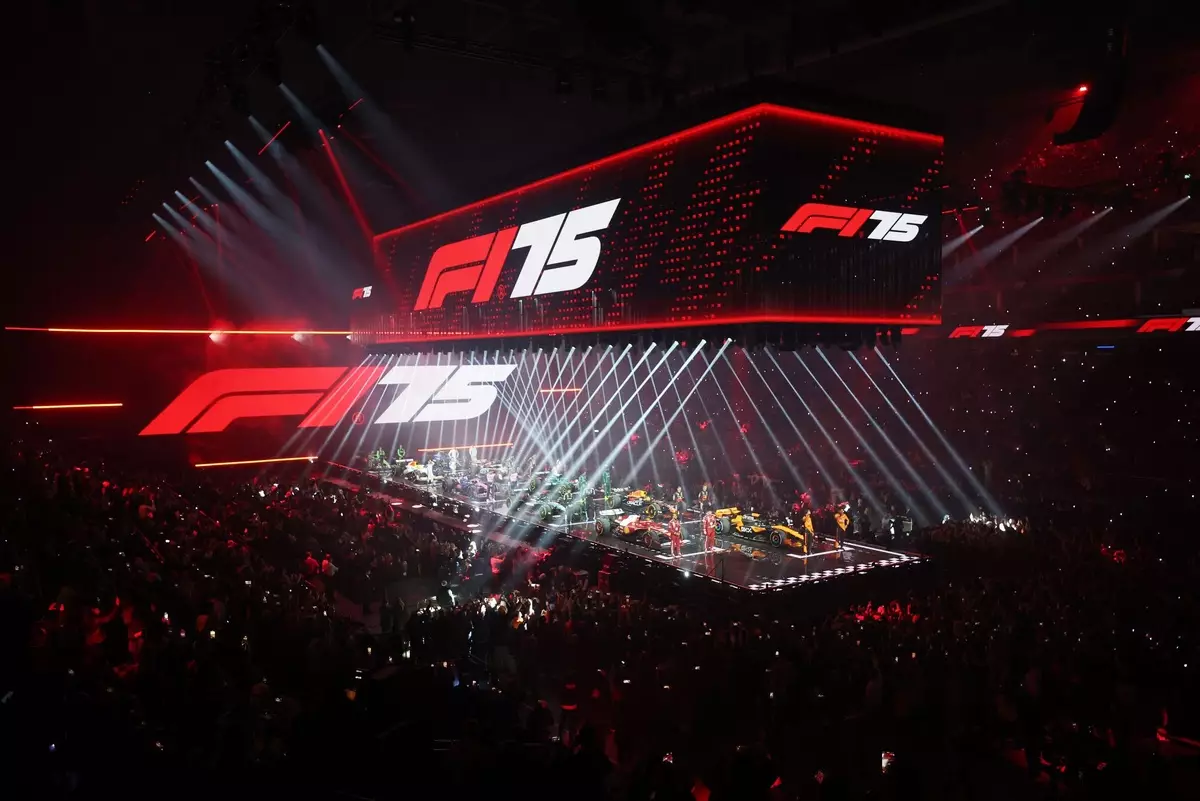The recent launch of the F175 livery in London’s East End marked a significant shift in Formula 1’s approach to car presentations. Infused with theatrical flair, the event was anything but a typical unveiling; it was a grand spectacle aimed at reaching new audiences and engaging with fans who may not have had the privilege of attending a live race. Automobiles, presentations, and charismatic personalities collided at the O2 Arena, leaving room for mixed feelings among traditionalists while delighting many others. However, it isn’t just the glitz and glamour that deserves a close examination; the reactions from both the attendees and the participants provide insight into the broader narrative of Formula 1’s evolving landscape.
Among the most notable aspects of the event was the palpable energy from the crowd. While the atmosphere was electric with cheers for prominent figures like Lewis Hamilton, contrasting boos for team principal Christian Horner and reigning champion Max Verstappen demonstrated a unique dynamic at play. This dramatic interplay between adulation and derision served not only to entertain but to highlight the complex relationships between the sport’s icons and its fervent fans. Jack Whitehall, the event’s host, astutely remarked about the “groaning” of purists, encapsulating the sentiment of those who felt disconnected from the flashiness oversaturating the event. Yet, for many fans, this extravagance was refreshing; it showcased F1 as a sport that values entertainment alongside competition.
While traditionalists might lament the departure from a more discreet approach, the F1 management has cleverly positioned this event as more than a mere car launch. It is an amalgamation of sport and showmanship aimed explicitly at broadening Formula 1’s appeal in a critical phase for the sport. The decision to host a flamboyant, multi-team unveiling rather than understated launches at team headquarters reflects an understanding that engaging with a younger audience demands innovative strategies. This drive to foster a new generation of fans aligns with the current trends within the sports industry, where spectacle often reigns supreme.
Performers and Personas: The Power of Personality
The way figures like Horner and Verstappen were treated during the evening demonstrates the delicate balance between celebrity and villainy within the F1 narrative. Horner’s acceptance of the audience’s jeers—he appeared unfazed as a consummate performer—reveals an adeptness in handling disappointment without harming personal image or recognition. Verstappen, too, returned to the stage amid mixed reactions, highlighting the intricate dance between performance and perception that defines their public personas. This performative element not only enhances the characters involved but also allows fans to feel they are part of the unfolding drama, whether supporting their heroes or booing the apparent antagonists.
From an entertainment perspective, the event did succeed in distinguishing itself from typical car launches, but it also opened the door for constructive criticism. The execution of various team presentations showcased different levels of creativity and effectiveness, with stronger themes emerging from Aston Martin and McLaren compared to Red Bull’s cinematic approach. Despite this divergence, certain elements like showcasing grassroots F1 platforms and featuring live car demonstrations were notably absent. Such oversights suggest that while style is vital, substance remains equally crucial. Balancing a fan-friendly essence with real content will be essential in crafting future events that resonate on both a spectacle and informational level.
As the dust settles on this groundbreaking event, it’s evident that Formula 1 has taken a bold step towards renewing its image and expanding its fan base. The livery launch may not have resonated with every purist, but failing to adapt to a changing audience could leave the sport stagnant in a rapidly evolving entertainment landscape. The challenge now lies in marrying tradition with innovation—acknowledging the roots while also embracing new pathways for engagement. If executed thoughtfully, future events could elevate the Formula 1 experience, making it accessible, exciting, and relevant for generations to come. The F175 livery launch was a gamble that paid off; it was a celebration of sport, spectacle, and the vibrant community that surrounds it.


Napsat komentář